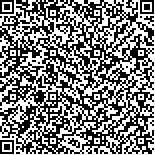| 摘要: |
| 于1993年9月在山东省胶南市鱼苗繁殖地池塘采得萼花臂尾轮虫,采用种群累积培养法,对其摄食5种淡水浮游藻的最适密度及其相应的种群增长进行研究。结果表明,该轮虫摄食这5种藻的最适密度(×106 cell/ml)分别是:蛋白核小球藻,45;斜生栅藻,25;小球衣藻,5;卵形隐藻,0.2;中型裸藻,0.1。导出了藻的细胞大小(x)和最适投喂密度(y)之间的回归方程为:y=-15.5+216/x(r=0.9826,P<0.01)。在5种藻的最适密度下比较了投喂轮虫的饵料效果,结果是,5种藻中以蛋白核小球藻和斜生栅藻为最优,其它依次为卵形隐藻、小球衣藻和中型裸藻。据此,认为蛋白核小球藻和斜生栅藻是该轮虫批量培养乃至工厂化培养的首选饵料。 |
| 关键词: 萼花臂尾轮虫 饵料藻类 最适密度 饵料效果 |
| DOI: |
| 分类号: |
| 基金项目:山东省科委基金资助项目,941406号 |
附件 |
|
| COMPARATIVE STUDIES ON FEED EFFICIENCY OF FIVE FRESHWATER PLANKTONIC ALGAE FOR THE ROTIFER BRACHIONUS CALYCIFLORUS—OPTIMAL ALGAL DENSITIES AND CORRESPONDING POPULATION INCREASES OF THE ROTIFER |
|
WANG Jin-qiu,LI De-shang,CAO Ji-xiang
|
|
Fishery College, Ocean University of Qingdao, Qingdao, 266003
|
| Abstract: |
| Studies on optimum densities of five freshwater planktonic algae for the ingesting and growth of the rotifer, Brachionus calyciflorus, collected from the Jiaonan Fry Productive Farm (Shandong Province) in September, 1993 were conducted using population accumulative culture method, under the conditions of temperature 32°C, duration of culture 48 and 72 hour, intensity of illumination 1000–1200 lx illumination period L:D=12:12 and regulating food densities twice a day. The seeds of five algae i.e. Chlorella pyrenoidosa, Scenedesmus obliquus, Chlamydomonas microsphaera, Cryptomonas ovata and Euglena intermedia, were purchased from the Institute of Hydrobiology, the Chinese Academy of Sciences, and cultured in lab under the conditions of that temperature 25-30°C, intensity of illumination 2000-3000 lx and illumination period 24h. The algae in the exponential phase of growth were concentrated and refrigerated in refrigerator (4°C, within 48h). Cell size (ESD), shapes, culture media and feeding densities for rotifer of five algae used in the experiment are shown in Tab.1. A comparative test of food efficiency of five algae for rotifer was undertaken on the basis of its experiment of optimal densities. The results show that optimum densities (×106 cell/ml) of the algae were 45 for Ch. pyrenoidosa, 25 for S. obliquus, 5 for C. microsphaera, 0.2 for C. ovata and 0.1 for E. intermedia (Fig.1). A relationship between the algal cell size (x) and optimum densities (y) was found to be: y= -15.5+216/x (r=0.9826,P<0.01) (Fig.2). In culture of the rotifer, the model may provide a scientific basis for reducing optimum algae density. In the comparative test of food efficiency of the five species of the algae for B. calyciflorus, the optimal densities of each alga for the rotifer were used; this was more accurate and reliable than that using the equal biomass or equal density. The sequence of food efficiency, shown by the greatest density (%) and instantaneous growth rate (%) of population of the rotifer fed with them, were Ch. pyrenoidosa (100 and 100), S. obliquus (91.7 and 98.7), C. ovata (37.4 and 81.3), C. microsphaera (34.7 and 80.3), and E. intermedia (19.6 and 71.4) (Tab.2). Thus, Ch. pyrenoidosa and S. obliquus are the best food for culture of the rotifer. In addition, because the rotifer is tolerable to a high food density, it can be cultured under high-density conditions. |
| Key words: Brachionus calyciflorus, Feed freshwater algae, Optimum density, Feed efficiency |
